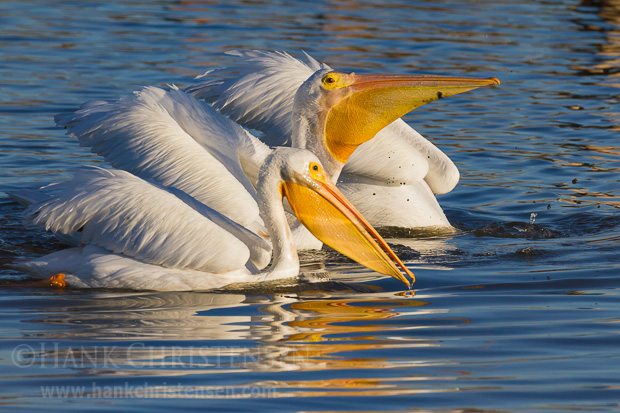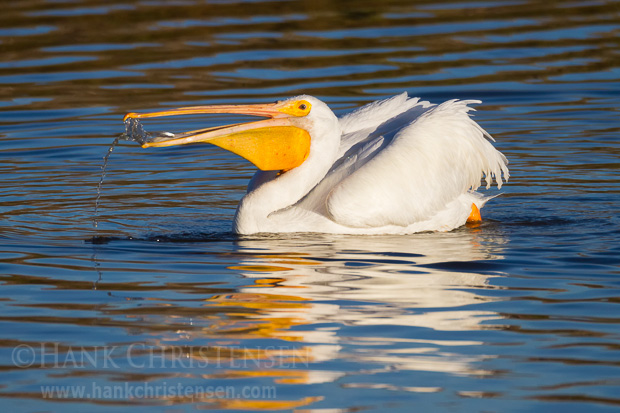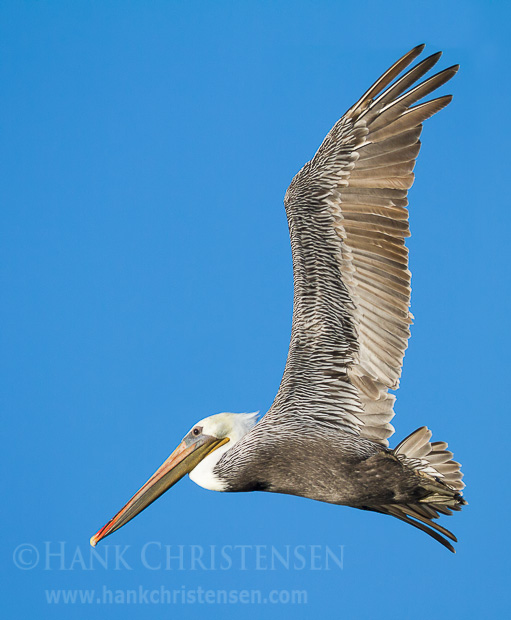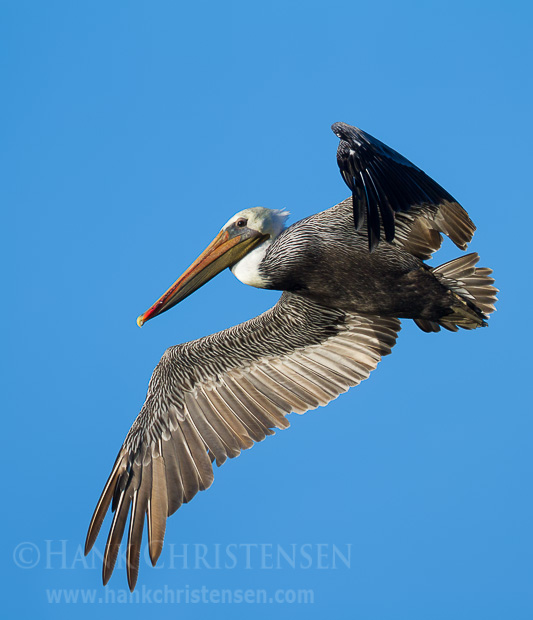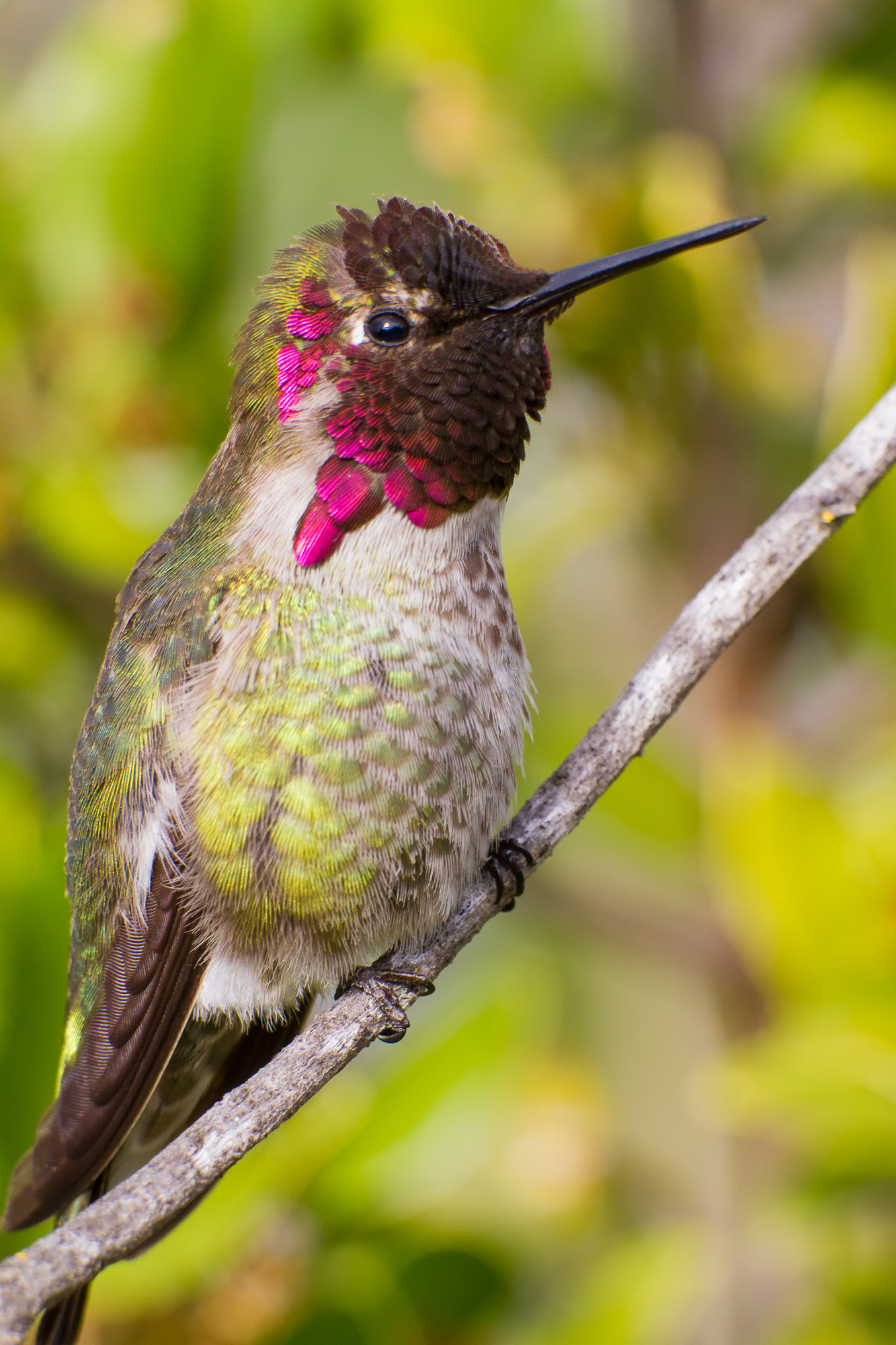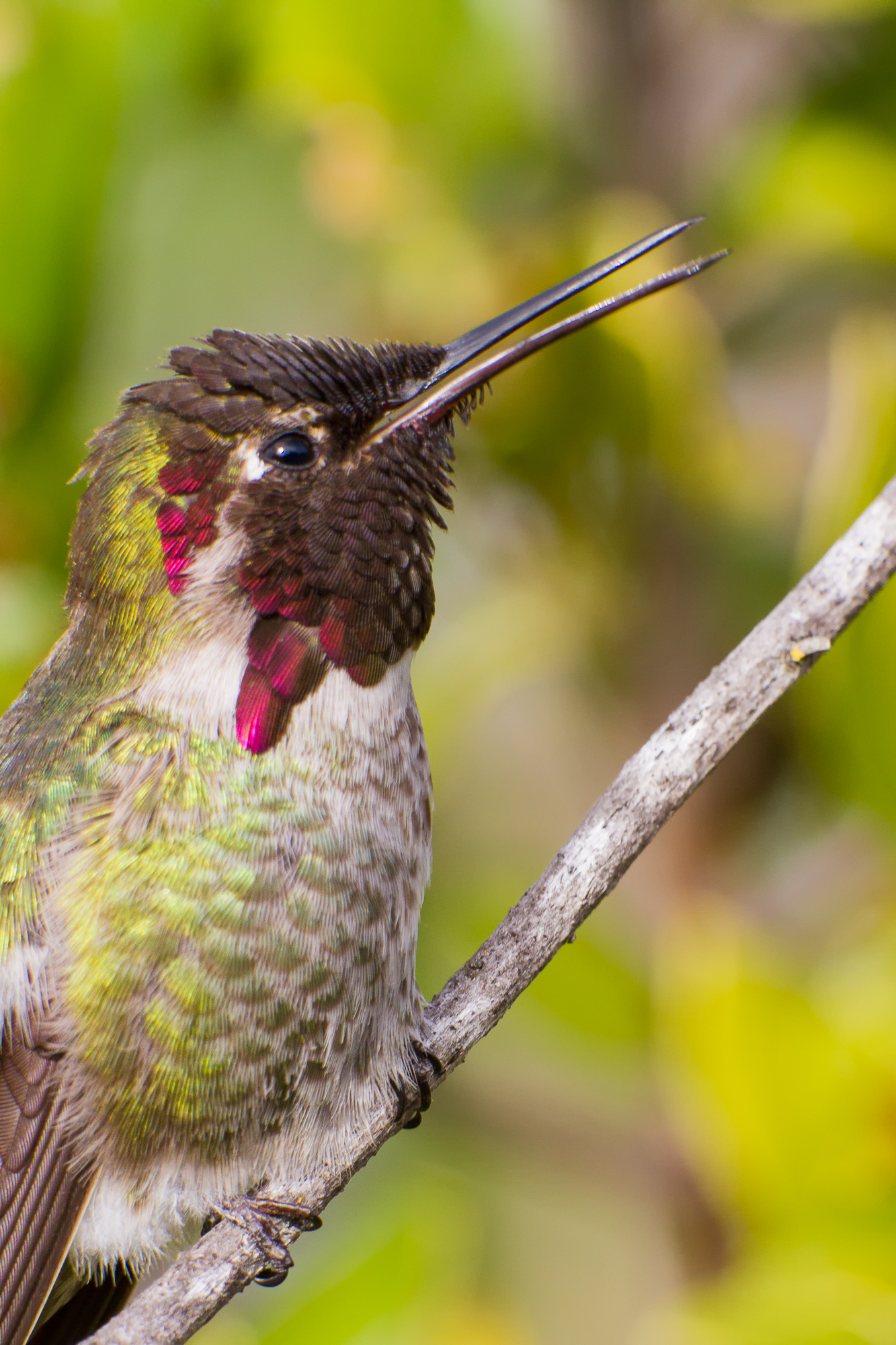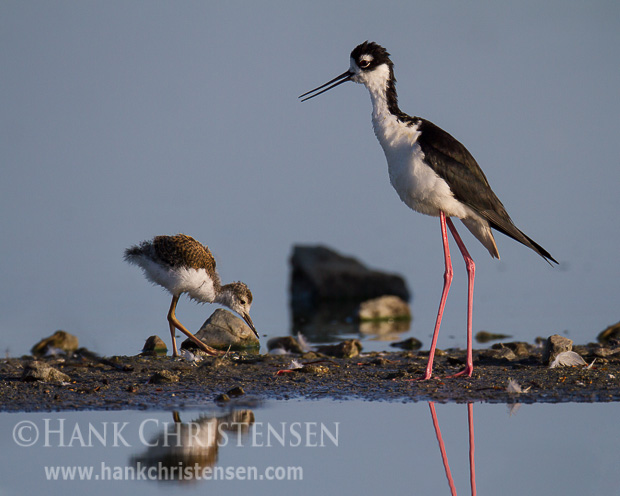
I recently finished processing a series of photos I took of a flock of evening grosbeaks that invaded a neighborhood in Sunnyvale, CA, a little south of my home. For several days, the birds were repeating a pattern of flying into the area in the morning, and perching on a row of chinese pistache trees, so I decided to head down and see if I could locate the flock.
I arrived in the neighborhood just after dawn when I figured the birds would be busy eating. I began to walk up and down the streets, occasionally stopping to listen for the distinct crunching sound of the birds eating the fruit off of the trees. All the while I was under the watchful eyes of the residents, who probably don’t often see someone walking past their house with an 800mm lens mounted to a large tripod.
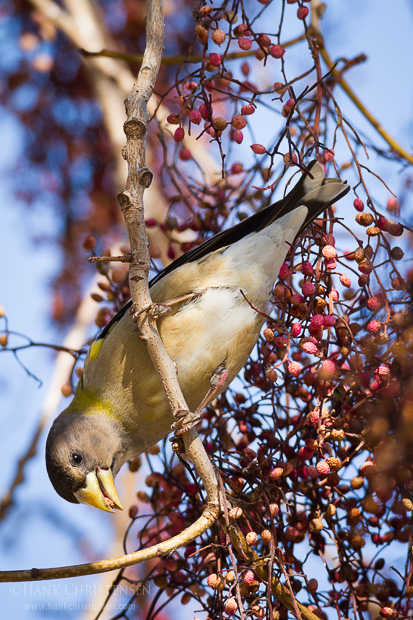
Finally, I was on the verge of giving up and decided to make my way back to my car. On my way back, I passed under one of the many chinese pistache trees and heard the soft crunch crunch crunch. Looking up I could just see one or two of the grosbeaks in the upper most branches. Thrilled, I set up my gear on the sunny side of the tree (so that the birds would be front lit), and waited until some of them ventured to lower fruit.

In all I hung out for about 20 minutes before the birds lifted off and flew elsewhere. It is always a treat to get such opportunities to photograph seasonal migrants.

